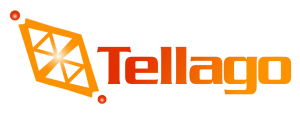IT system and service management has been one of the most ignored areas in the software industry in terms of innovation, user experience or even in delivery model. While the rest of the software industry has been the main stage for complete technical revolutions, the IT systems/service management space has, arguably, operated under the same software principles for decades. Consequently, traditional software packages in areas such as system monitoring, help desks, system management, and inventory management constantly struggle to keep up with the rapid pace of software technologies.
At the risk of sounding like I am oversimplifying a very complex problem, I think that every other challenge in the IT system/service management is a consequence of the following limitations:
- Complex Complex Complex: For the last few years, simplicity has been an unknown term in the IT system/service management space. IT monitoring and management software are notorious for being incredibly complex to the point of requiring expert level help to be setup and configured correctly as well as a dedicated IT staff to maintain it.
- Slow to Evolve, Painful to Upgrade: Given its complexity and mission critical nature, IT system/service management software evolves at a much slower pace than the rest of software technology. Similarly, upgrades to these types of packages tend to be relatively complex and, sometimes, cost prohibitive.
- Lack of Extensibility: Because the diversity of the problems that occur in an IT infrastructure, it’s impossible for a single software vendor to implement the right mechanisms to monitor, troubleshoot and manage every piece of infrastructure or software technology adopted in its organization. At the same time, the lack of openness together with the complexity of most IT system management packages has made it incredibly difficult, if not, sometimes, impossible for IT professionals or third parties to extend it with their own solutions.
Digging even deeper into the nature of the IT system management space, we realize that the complexity, lack of innovation and transparency of most on-premise packages is far from being a purely technical problem and it has a lot to do with the economics of that segment of the software industry. On-premise system management is a very lucrative business partially fueled by the complexities of IT infrastructures. In that sense, the lack of innovation in the IT system management software packages, rather than being a detriment, highly contributed to the economic dynamics of the space.
Fortunately, Times Are Changing for the IT System Management Software Industry and the Cloud is Leading the Way
Similar to other segments of the software industry, cloud computing is bringing the missing ingredients that were needed to disrupt the IT system management space. Differently from other areas in which the benefits of embracing cloud infrastructures are not as apparent, the characteristics of a cloud computing model directly address the main challenges of the IT system space. As I listed three major limitations of the on-premise IT system management systems, let me present three clear benefits of alternative cloud models
- Simple Simple Simple: Cloud IT system/service management will inherently remove the complexities of having to maintain and manage the IT infrastructure required by on-premise system management software packages. In this model, the on-premise infrastructure is constrained to the components that capture and collect the data required for the IT management tasks.
- Rapidly Evolving, Transparent Upgrades: Similar to other cloud models, cloud-based IT system management platforms will be able to perform frequent upgrades completely transparent to its tenant. As an organization, that means that you will have access to new or upgraded functionalities on a periodic basis.
- Cloud Friendly: This benefit might not seem as trivial as the previous two but is equally relevant. As cloud infrastructures become part of the DNA of most companies, there is an increasing need to manage, monitor and service those cloud infrastructures. Obviously, a cloud IT system management software is far better equipped to manage emerging and rapidly changing cloud infrastructures than its on-premise equivalents.
It’s Happening Already
These are just some of the most notable examples of companies actively disrupting the IT system management space by challenging traditional models using innovative techniques enabled by new cloud computing models. While there will still be a place for traditional on-premise system management software, it’s undoubtedly that the dynamics of the industry are changing towards simpler, more powerful and agile cloud system management softwares.
About the Author: Jesus Rodriguez is the co-founder and CEO of Tellago Studios, the company behind the Moesion platform (http://www.moesion.com ). A software scientist by background, Jesus is an internationally recognized speaker and author with contributions that include hundreds of articles and sessions at industry conferences. Jesus is responsible for driving the vision and strategy of the Moesion(http://www.moesion.com ) platform to enable IT professionals to manage their IT servers or cloud services directly from their smartphone or tablet.

Hey Rodriguez,
The SaaS industry, no doubt is evolving quickly. With more users switching over to SaaS models, traditional IT system management softwares have now become a thing of the past. For efficient customer support, I invite you to try HappyFox, a fully hosted helpdesk software. Powerful automation features and an intuitive user interface make HappyFox an ideal partner to work with. Useful customization options lend a nice personal touch to the software. Affordable monthly pricing-plans also make HappyFox feel light on your wallet.